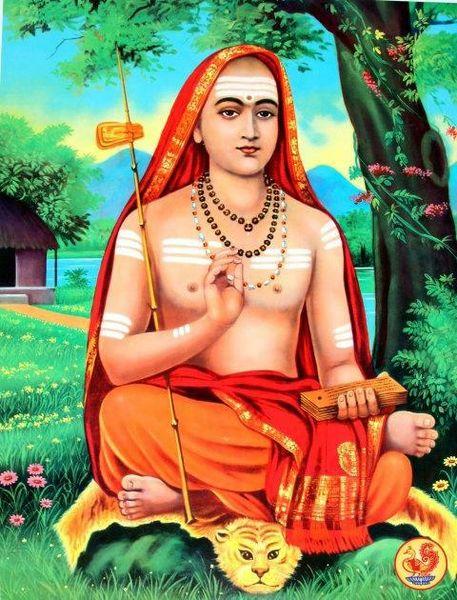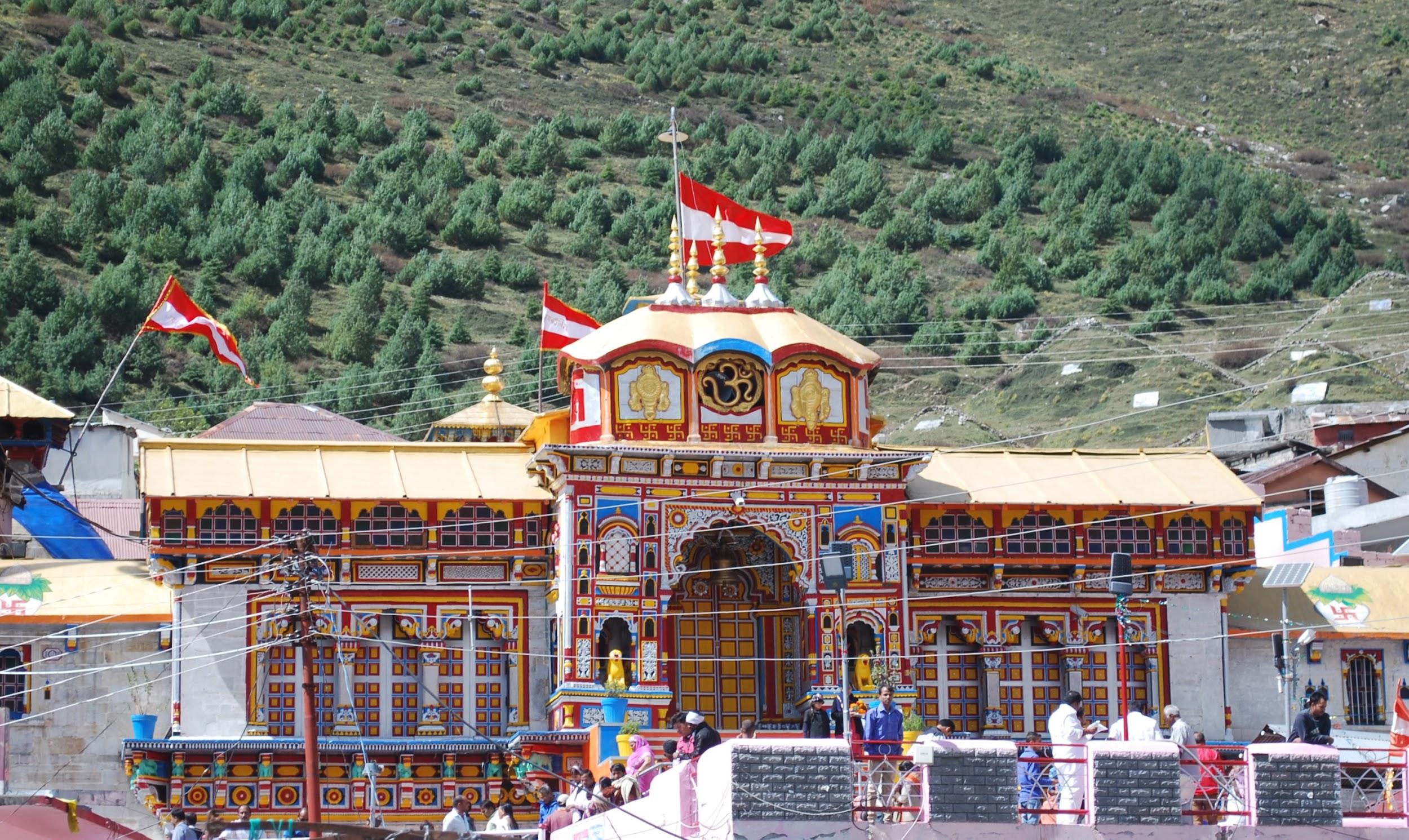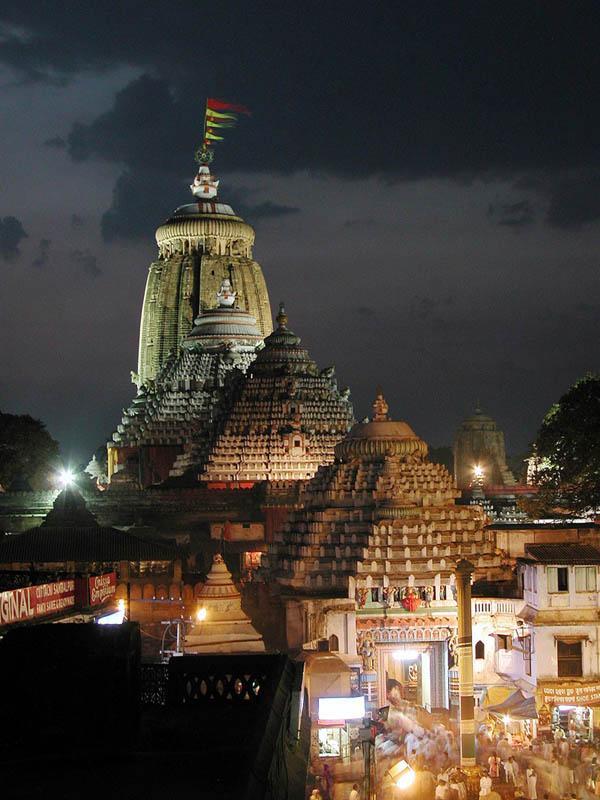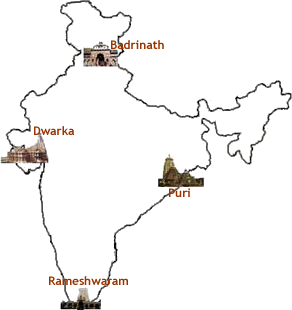Chaar Dhaam
Hindus consider Bharat as a holy land. A land where Ram and Krishna came on earth as reincarnations of Vishnu for the destruction of evil. So throughout Bharat, there are holy sites, where famous temples and mutts are located. Many traditions that arose from Hindu Dharma such as Saiva, Vaishnava, Sikh, Sakta, Buddha, Jain have their holy places in all corners of Bharat.
Hindus travel thousands of miles to visit these holy places. This is how the tradition of taking pilgrimages started and it has continued since ancient times. Hindus from the southern part travel to the northern part to visit holy places such as Kashi and Amarnath. Similarly, Hindus from northern part of India visit places in the southern part such as Rameshwaram, Tirupati, and Madurai. Holy lands in west Bharat such as Somnath and Parashuram Kund in Arunachal Pradesh also are sites of high reverence by Hindus. All these holy places played an important role in uniting Bharat culturally, and they have helped in bringing people closer.

Adi Shankaracharya, a saint, reformer, and philosopher of the ninth century CE (common era) played a prominent role in reviving Hindu dharma in Bharat. He traveled from north to south, east to west, rejuvenating our culture, and thus became instrumental in national integration. He was born into a Brahmin family in a town called Kaladi in Kerala (a state in the southern part of Bharat). He became a sanyasi at a very young age. It is believed that he was a reincarnation of Lord Shiva. He traveled across the Bharat, debated with several scholars, and established the authority of Hindu Dharma. Adi Shankaracharya established the chaar Dhaam (Four Centres) in Badrinath (North), Rameshwaram (South), Jagannath Puri (East), and Dwaraka (West) in four corners of Bharat; thus setting a classic example of cultural and national unity of Bharat.
(1). Badrinath is situated in the Himalayas on the banks of the Alaknanda river. The town lies between the Nar and Narayana mountain ranges and in the shadow of Nilkantha Peak.  Badri refers to a berry that was said to grow abundantly in the area, and Nath refers to Lord Vishnu. It is widely believed that Adi Shankaracharya discovered a black stone image of Lord Badrinarayan in Alaknanda river and he enshrined it in nearby tapt-kund (hot springs), which was later moved to the present temple by the King of Garhwal. Legend has it that when the Goddess Ganga was requested to descend to Earth to help the suffering humanity, the Earth was unable to withstand the force of her descent; therefore the mighty Ganga was split into twelve holy channels. River Alaknanda is one of them. Badrinath later became the abode of Lord Vishnu or Badrinath. This is why it is also known as Bhu-Vaikunta or Earthly abode of Lord Vishnu.
Badri refers to a berry that was said to grow abundantly in the area, and Nath refers to Lord Vishnu. It is widely believed that Adi Shankaracharya discovered a black stone image of Lord Badrinarayan in Alaknanda river and he enshrined it in nearby tapt-kund (hot springs), which was later moved to the present temple by the King of Garhwal. Legend has it that when the Goddess Ganga was requested to descend to Earth to help the suffering humanity, the Earth was unable to withstand the force of her descent; therefore the mighty Ganga was split into twelve holy channels. River Alaknanda is one of them. Badrinath later became the abode of Lord Vishnu or Badrinath. This is why it is also known as Bhu-Vaikunta or Earthly abode of Lord Vishnu.
 (2). Rameshwaram is a town in Southern State of Tamil Nadu. It is also considered as one of the holiest places in Bharat. Here in the Rameshwaram temple, Lord Shiva is worshipped as Sri Ramanatha Swamy. Because here the Shiva-ling was worshipped by Lord Shri Ram on his way to Sri Lanka and thus the name. Also, Rameshwaram is considered one of the twelve Jyotirlingas of Bharat. The Rameshwaram temple also stands as an example of marvelous Hindu architecture. Different rulers built the Ramanatha Swamy Temple over a period of time, starting from the 12th century. The temple is made up of forty wells, where the taste of the water of each well is different from the other. Sethu Karai is a place 22 km before the island of Rameshwaram from where Lord Rama built a floating stone bridge “Ramasethu” till Rameshwaram that further continued from Dhanushkodi in Rameshwaram till Talaimannar in Sri Lanka, as mentioned in the Ramayana. So Hindus all over the world consider Rameshwaram as a very prominent pilgrimage place that they have to visit during their lifetime.
(2). Rameshwaram is a town in Southern State of Tamil Nadu. It is also considered as one of the holiest places in Bharat. Here in the Rameshwaram temple, Lord Shiva is worshipped as Sri Ramanatha Swamy. Because here the Shiva-ling was worshipped by Lord Shri Ram on his way to Sri Lanka and thus the name. Also, Rameshwaram is considered one of the twelve Jyotirlingas of Bharat. The Rameshwaram temple also stands as an example of marvelous Hindu architecture. Different rulers built the Ramanatha Swamy Temple over a period of time, starting from the 12th century. The temple is made up of forty wells, where the taste of the water of each well is different from the other. Sethu Karai is a place 22 km before the island of Rameshwaram from where Lord Rama built a floating stone bridge “Ramasethu” till Rameshwaram that further continued from Dhanushkodi in Rameshwaram till Talaimannar in Sri Lanka, as mentioned in the Ramayana. So Hindus all over the world consider Rameshwaram as a very prominent pilgrimage place that they have to visit during their lifetime.
 (3). Dwarka (western part of Bharat) is believed as one of the seven most ancient cities in Bharat. The legendary city of Dwaraka was the dwelling place of Lord Krishna. It is believed that due to damage and destruction by the sea, Dwaraka has submerged six times; the modern Dwarka is the 7th city to be built in the area. The city derives its name from the word “Dwar” meaning door in Sanskrit. The temple has a five-story tower which was built by Sambha, the grandson of Lord Shri Krishna. There are two gateways namely Swarga Dwar where pilgrims enter, and Moksha Dwar where pilgrims exit. From the temple, one can view river Gomati flowing towards the sea. Dwarka is also considered as one among 108 holy Vaishnava Tirthas of Bharat.
(3). Dwarka (western part of Bharat) is believed as one of the seven most ancient cities in Bharat. The legendary city of Dwaraka was the dwelling place of Lord Krishna. It is believed that due to damage and destruction by the sea, Dwaraka has submerged six times; the modern Dwarka is the 7th city to be built in the area. The city derives its name from the word “Dwar” meaning door in Sanskrit. The temple has a five-story tower which was built by Sambha, the grandson of Lord Shri Krishna. There are two gateways namely Swarga Dwar where pilgrims enter, and Moksha Dwar where pilgrims exit. From the temple, one can view river Gomati flowing towards the sea. Dwarka is also considered as one among 108 holy Vaishnava Tirthas of Bharat.
(4). The Jagannath temple in Puri (eastern Bharat) is a famous Hindu temple dedicated to Jagannath (Krishna) located in the coastal town of Puri, Orrisa. The name Jagannath (Lord of the Universe) is a combination of the Sanskrit words Jagat (Universe) and Nath (Lord of). The temple is an important pilgrimage destination for many Hindu traditions, particularly worshippers of Krishna and Vishnu. The temple is famous for its annual Rath yatra, chariot  festival, where huge and elaborately decorated chariots are used for the procession of the three main temple deities. The huge temple complex covers an area of over 400,000 square feet and is surrounded by a high fortified wall. It contains at least 120 temples and shrines. With its richness in sculpture and of the Orissan style of temple architecture, it is one of the most magnificent monuments of Bharat. As of today, Jagannath Puri temple’s kitchen is considered as the largest kitchen in Bharat where “Maha Prasad” is fed to thousands of devotees daily. Around 500 cooks and 300 helping hands prepare 56 different offerings known as ‘Mahaprasad’ or ‘Abhada’ for Lord Jagannath, which are served to the deity six times a day. It is said that food for one lakh devotees can be prepared in the temple kitchen within an hour.
festival, where huge and elaborately decorated chariots are used for the procession of the three main temple deities. The huge temple complex covers an area of over 400,000 square feet and is surrounded by a high fortified wall. It contains at least 120 temples and shrines. With its richness in sculpture and of the Orissan style of temple architecture, it is one of the most magnificent monuments of Bharat. As of today, Jagannath Puri temple’s kitchen is considered as the largest kitchen in Bharat where “Maha Prasad” is fed to thousands of devotees daily. Around 500 cooks and 300 helping hands prepare 56 different offerings known as ‘Mahaprasad’ or ‘Abhada’ for Lord Jagannath, which are served to the deity six times a day. It is said that food for one lakh devotees can be prepared in the temple kitchen within an hour.

So these chaar Dhaams located at four corners of Bharat stand today giving a message of the national and cultural unity of Bharat and remind Hindus to stand united forgetting all the regional and language barriers. Visiting chaar Dhaams is famously known as chaar Dhaam Yatra and it is believed by Hindus that every Hindu should visit the chaar Dhaams during one’s lifetime




